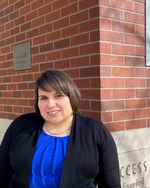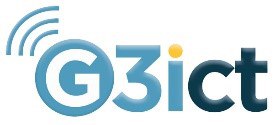That’s “Amazing”, “Awesome” – Can We Avoid Fake News on Access and Inclusion?
Posted on September 03, 2019

Director, David Banes Access and Inclusion Services and Board Member, DATEurope
In many cases, the traditional role of Assistive Technology (AT) specialists has been to discover and assimilate information about persons with disabilities. They then map their knowledge of technology, more specifically, access technologies and provide recommendations. This process of assessment and evaluation of needs, of matching people to technology has provided the fundamental basis of assistive technology services in much of the US and Europe and has influenced models of delivery across the world. As the demand for service and accessible technology increases, it recognized that this model of direct service is unable to fulfil the need for AT across the globe.
In response, and within underserved communities, there has been a significant shift in recent years from people with a disability waiting for an expert to become available towards personal identification and self-determination of AT needs. The challenge lies in ensuring that such self-determination is based on valid assumptions and independent information.
In some cases, information and knowledge required to make decisions are structured and presented in the form of databases and guides. I have previously highlighted the value of the Gari database, as well as the potential of AI-driven innovation to improve the likelihood of good choices in personal assistive technology. Sources of potential information have diversified, and encompass sites such as "Ask Jan" and the Southern Africa AT database.
However, websites are not the primary means by which many users seek information. Social media has progressed to be the channel of choice for many who seek to identify and purchase solutions for their use. This trend can be challenging - we live in an era of fake news and viral outrage. It is paramount to ask - how can persons with disabilities trust the information they find online, share with friends and vividly presented in their newsfeed.
Empowering persons with disabilities to make critical decisions about their lives and technology must be based upon the capacity to gain access to valid information. For this, AT services need to help users spot fake news and stories. It is challenging to divide fact from fiction, and many stories seem to span the two ends of truth. How can this issue be addressed? AT services can establish themselves in the role of a trusted intermediary that authenticates, curates, and validates information gathered from across the world. However, it is essential to advise users on how they may trust stories, and these could include:
1. Be Critical: If it sounds too good to be true, it probably is. As you scroll through your newsfeed, a healthy cynicism might be valuable. We need to be cautious about stories that hype an innovation or development beyond what is viable. Stories that suggest, "everyone" is "amazed" by this "genius gadget" "sweeping" the nation may at the very least be exaggerating reality. It is important to read such stories critically and not get carried away by the emotion. It is an important skill to ask questions such as why the story is written, is it trying to over-sell or diverting traffic to another website. Most importantly, avoid making a decision based on the headline and opening paragraph - convincing as it may sound.
2. Check the Source: Look at the sources your trusted people are using; these are more likely to be sources you can also trust. Investigate a story when it's from a new source. Deep dive into the publisher - is it a professional, a company or someone's blog? Look at what else they have shared. If they share stories repeatedly about one product or manufacturer, you may question that trend.
3. See Who Else Is Reporting the Story: Check whether the story has been picked up by others and what comments the audience has. A single initial source has led many stories about new technology. Simply because a story has many shares, it does not mean the story has been read and understood thoroughly. You may find that a single press release drives a story featuring new, amazing technology or is an "advertorial."
4. Look at the background: A credible story will consist of independent information including facts, quotes from experts, survey data and official statistics. It is important to explore who has provided these facts, whether they are validated and if there are real-life instances of persons that use and can review the technology. Most people don't book a hotel without looking at reviews, and the same process helps understand assistive technology.
5. Does It "Sound Right": Trust your common sense and intuition. If an item in your newsfeed or tweets sounds unbelievable, it probably is. Healthy cynicism is helpful. Connect with other readers of the story and talk to the technology or service users. Seek answers by posting the story with accompanying questions like, "who have used this", "what did you think?" If there are few replies, or the replies seem to be by someone with a vested interest – beware.
Increasingly, there are opportunities for persons with disabilities to control the decision-making process for assistive technology. In meeting global needs, this shift is inevitable. However, AT services and experts have an essential role to play to ensure that transference is successful. Providing reliable sources for day to day information will be at the heart of that success.




























